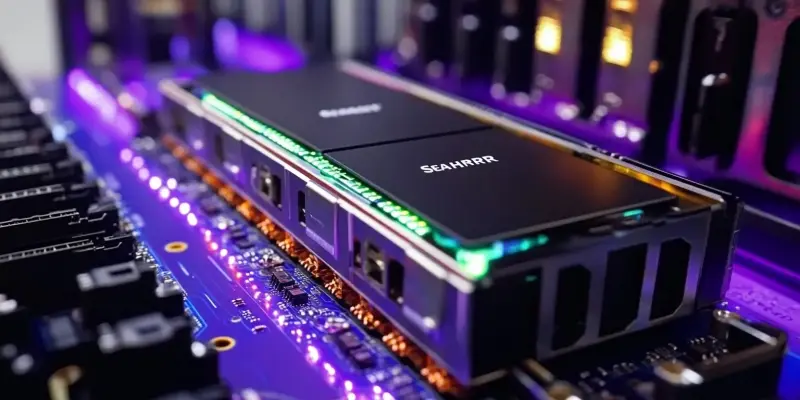In a groundbreaking move for the data storage industry, Seagate has unveiled the world’s first high-capacity HDDs using Heat-Assisted Magnetic Recording (HAMR) technology, signaling a new era in data storage capacities. This monumental advancement had been in development for decades, with initial patents tracing back to 1954 and the company’s research kicking off in the 1990s. The result of these extensive efforts are the new Exos M drives, available in 30TB and 32TB models. The 30TB drive employs conventional magnetic recording (CMR) while the 32TB model utilizes the controversial shingled magnetic recording (SMR) technique, both promising a high data density of 3TB per platter, along with notable improvements in energy efficiency and sustainability.
The Emergence of HAMR Technology
Seagate’s innovative HAMR technology marks a significant leap forward in data storage, leveraging a laser diode to heat tiny areas of the disk to enable higher density digital writing. This intricate heating, writing, and cooling process occurs rapidly, within less than one nanosecond. Developed on Seagate’s Mozaic 3+ platform, these HAMR drives promise enhanced efficiency and reliability, positioning them as a transformative solution for the industry’s future needs. Extensive testing, involving over 500,000 Mozaic 3+ hard drives, has demonstrated that HAMR HDDs are as reliable as traditional magnetic drives, dispelling concerns surrounding the new technology. Seagate’s commitment to continued innovation is further illustrated by plans to increase platter density to as much as 4TB in future models, potentially leading to even higher capacity drives.
Industry Implications and Future Prospects
The release of the new Exos M series, available in 30TB and 32TB models, signifies a new chapter not only for Seagate but for the entire data storage industry, paving the way for future advancements and higher storage capacities. The 30TB drive employs conventional magnetic recording (CMR), while the 32TB model uses the more debated shingled magnetic recording (SMR) technique. Both versions promise a high data density of 3TB per platter, accompanied by notable improvements in energy efficiency and sustainability. This milestone, developed over decades with initial patents dating back to 1954 and research beginning in the 1990s, indicates the extensive efforts behind these advancements.

